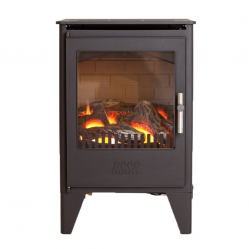OBSOLETE - Purevision PV5W Natural Gas Stove with Black Glass Liners

Technical Details
| Product Title | OBSOLETE - Purevision PV5W Natural Gas Stove with Black Glass Liners |
|---|---|
| Fuel | Gas |
Reviews
Gas Stoves > Conventional Flue Gas Stoves

Conventional Flue Gas Stoves
Our range of conventional flue gas stoves are perfect for fitting into an existing chimney breast where the flue can terminate through the roof. Toxic gases are expelled from the chimney through the draw, where negative and positive pressure meets to pull the smoke up the chimney. A conventional flue will require air from the room in which the appliance is situated for combustion, so it is not considered ‘room sealed’ or ‘closed combustion’. In order for a conventional flue to function efficiently, it must exit the appliance as vertically as possible, although some bends and changes in direction are allowed, but if in doubt refer to Document J Building Regulations.




